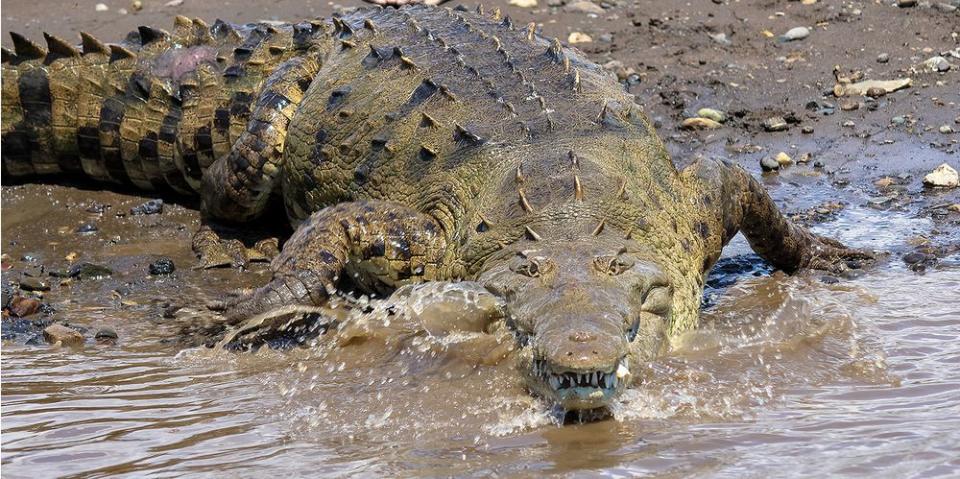Giddy Up, Crocodile! Scientists Discover Several Crocodile Species Can Gallop
A new study found that crocodiles can actually move much faster than you think.
A group of veterinary scientists, led by London Professor John Hutchinson, in Florida recently discovered that eight different species of crocodiles are able to gallop when they reach their maximum speeds.
While scientists previously thought that only a few species could manage such a fast movement, new observations published in the journal Scientific Reports proved that galloping is a much more attainable trait for crocodiles.
According to The Guardian, the study of 42 animals from 15 species was performed at a St. Augustine alligator farm and zoological park in Florida. Researchers placed the individual creatures at the end of a runway and observed their behavior while trying to get them to cross to the other side.

The scientists found that while alligators and caimans were only able to manage a trot, several of the crocodiles — regardless of their different walks and sizes — performed a horse-like gallop with an average top speed of 11 mph.
RELATED: 7-Foot Crocodile Swims in Ohio Creek While Children Play: ‘We Had No Idea What Awaited Us’
“We suspect that bounding and galloping give small crocodiles better acceleration and maneuverability, especially useful for escaping from danger,” Hutchinson told the outlet. “It seems like alligators and caiman stand their ground rather than run away with an extreme gait.”
As the galloping movement was present in several of the species, researchers hypothesized that the galloping started as a trait in crocodylomorphs, the land-dwelling ancestors of crocodiles which were cat-sized with long legs.
RELATED: Florida Man Wearing Crocs Gets Bitten After Jumping Into Crocodile Exhibit at Alligator Farm
The Cuban crocodile, which can grow to be more than 6 feet long, was observed as the largest galloping species of crocodile, however, they were less likely to gallop than the smaller species.
“That’s as big as crocs can get and still bound and gallop,” Hutchinson added “The Cuban crocs are incredibly active on land and incredibly athletic. This species is notorious for being really aggressive.”
Hutchinson also explained that galloping is also common in other species such as toads and spiders. Since the gait is an energetically efficient way to move, the trait has evolved in several species.

